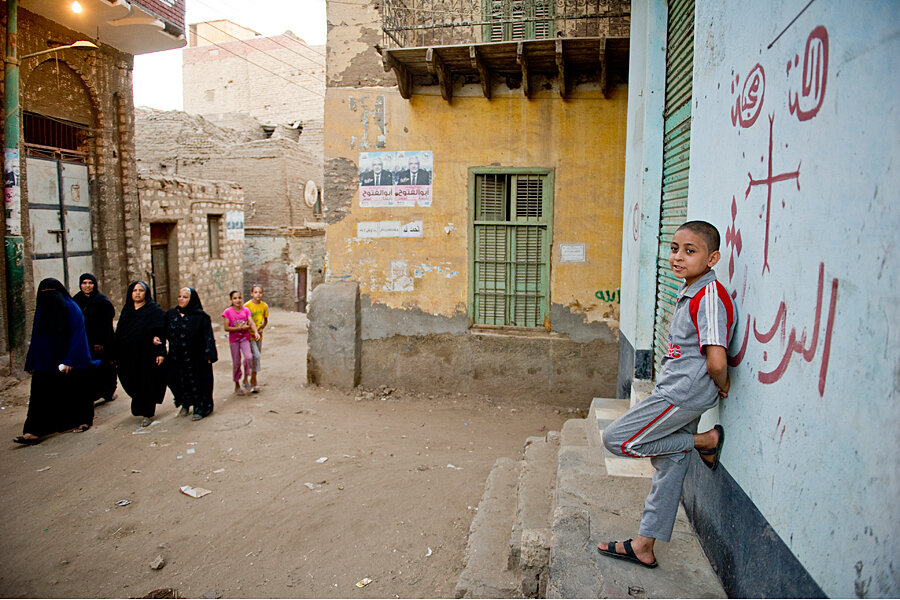Why religious tensions are spiking around the globe
Loading...
Global religious hostilities, including government restrictions on how individuals can practice their faith and conflicts between communities of different faiths, reached a six-year high in 2012, according to the Pew Research Center.
One-third of the 198 countries and territories included in the study, released this week, had a high level of religious restrictions, with an even greater share affected by religiously-based social hostilities that included verbal abuse, overt hate crimes, and murder.
“This is the first time that this study has found that social hostilities involving religion affect a larger share of the world’s population than government restriction on religious freedom,” says Brian Grim, the principal investigator for all five studies.
But even as observers pointed to greater global migration and integration with people of different faiths as a root cause, they also suggested such mingling could ultimately help ease religious tensions.
Religious harassment has been present in 185 countries since Pew first began to quantify religious freedom in 2007. Christians have faced the most widespread harassment, with Muslims running a close second. Overall levels of religious hostility have heightened in every region of the globe except for the Americas.
Indeed, many theologians say that independent research over the past several years has also suggested that “intolerance is on the march,” something they attribute to political instability and greater interconnectivity.
“The best sense I can make out of it is that globalization processes are shrinking the world and people are bumping against each other with very few firm and immovable boundaries between them,” says Miroslav Volf, a Yale Divinity School professor and founding director of the Yale Center for Faith and Culture.
Freedom to practice my religion
While the fall of the Soviet Union and the breakdown of the cold war world offered new religious freedoms to many individuals, it also opened the door for increased tensions.
Prof. Volf, who grew up in the former Yugoslavia, saw this transformation play out first hand. Under the communist and officially secular regime, Catholics and Protestants lived side by side without incident, largely because they both felt equally oppressed, Volf says. It was only when the oppression from the government was removed that hostilities between the two groups emerged.
People tend to think about democratic rights in terms of the freedom to practice their own religion, and do not necessarily see those rights extending to freedom of other individuals to practice different faiths, Volf says.
A similar scenario is currently unfolding in the Middle East and North Africa, the two regions of the globe where Pew found the most pronounced spike in religious hostility.
“When you are looking at the failure of a nation state, people are searching for meaning that is broader, larger, and more robust than the failure that they experience from their own government,” says Dana Robert, a theology professor at Boston University and director of the BU Center for Global Christianity and Mission. “So religion represents a very flexible set of traditions that one can draw upon in times of stress. It’s no surprise that what starts off looking like a secular, moderate set of changes, becomes deeper and more and more religious if the change doesn’t happen in the way that people need.”
Both Prof. Robert and Volf say that increased global ties have helped fuel the sense that other religions are ominous groups made up of “others” rather than loosely connected individuals who share values.
As that perception grows, people start to see the family down the street not as neighbors, but as as members of a global religion with an international agenda, Robert says.
Greater integration of religion with politics can be equally toxic, says Volf.
“The worst thing that happened to world religion is the association with political power,” Volf says. “Once the association is there, it is very easy to see how it is misused. It can be misused in authoritarian regimes, and it can be misused in democratic regimes.”
Yet globalization and migration may also hold the key to helping to combat this persistent fear of the other, he argues.
For instance, when Muslims from a variety of different cultural background meet in a place like New York City, they discover that there is more than one way to practice their faith, Volf says. Likewise, they are frequently exposed to individuals of different faiths and can be surprised to learn that they may share many values.
When those boundaries between faiths and cultures become less rigid, “religion becomes much more of a spirituality, much more of something that speaks to a person as an individual and binds people across other dividing lines,” he adds. “I personally see hope in this. I see hope in this for Islam. I see hope in this for other religions as well.”
This happens all the time in educational settings, Robert points out. When students are exposed to other cultures and faiths through literature, coursework, and direct interaction, they begin to develop an expansive sense of self in relation to the other.
That said, education is not a panacea. “Sometimes a lot of people who are the most violent are the educated leaders because they have the skills to manipulate the group,” she adds.
“It is important to note that these religious restrictions and hostilities affect people of all religions and even people with no religious faith,” says Mr. Grim, the study's principal investigator. “It’s not a sectarian issue, a partisan issue, a political issue, but a human issue that affects us all.”





